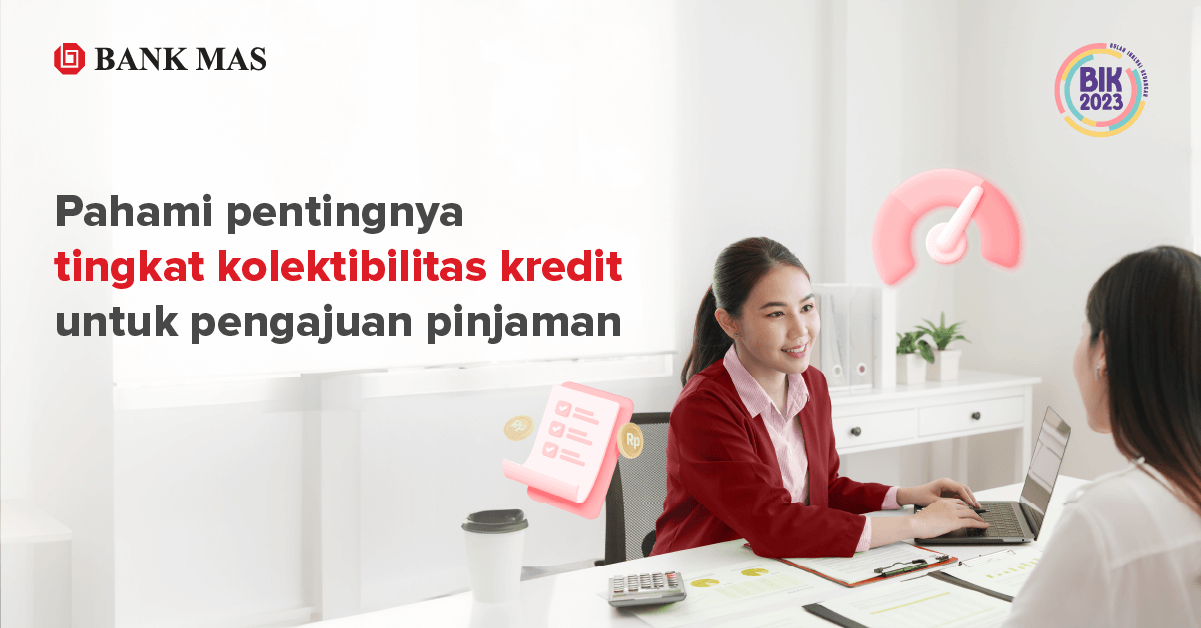Do you want or are in the process of applying for credit? First, understand your credit collectability or score so that a bank or other financing institution can accept your credit application. Then, what is credit collectability?
According to the OJK, credit collectability is the state of principal payment or installments of principal and loan interest by customers and the degree of possibility of receiving funds invested in securities or other investments.
Credit collectability is a reference for financing institutions or creditors whether the credit you are applying for is acceptable or not because this is related to your ability to pay for the credit you are applying for.
Credit Collectability Level
There are 5 credit collectability levels that you can study before applying for credit from a financing institution or creditor.
-
Fluent
The best level of credit collectability in terms of performance is Fluent. Fluent or commonly known as Kolek 1, is the rate applied to someone who has a credit history and repays both principal and interest on time each month. Or, for those of you who always pay credit bills before the due date, you can also be categorized as collector level 1 or Fluent.
-
In Special Attention
The next level of credit collectability that is quite good in terms of other performance is DPK or In Special Attention. DPK or Kolek 2 is the credit collectability level of a person who has a history of late payment of bills or credit beyond the specified due date of at least 90 days from the date of maturity.
Credit that are in arrears can also be in the form of principal bills or credit interest bills. In addition, DPK status will be pinned, not just late bill payments. There is a smooth financial cash flow factor that indicates the ability to pay bills, but bills are still not paid within a maximum period of 90 days after they are due.
-
Not that smooth
The collectability level for substandard credit is an advanced status of the previous collectability level or collectability 2. If previously it occurred if you were in arrears for 90 days, collectability 3 or substandard can occur if you make arrears for at least 120 days from the due date of the bill.
By setting Kol 3 or substandard credit status, you will also get a warning letter (SP) from the bank where the actual calculation of the arrears of principal and ongoing interest from the bill will appear later.
Apart from that, there will also be arrears of running penalties, arrears in bookkeeping administration and many other arrears that will be summarized in factoring. However, those of you who have Kol 3 status can also carry out restructuring if you still have the ability to pay obligations.
-
Doubtful
Doubtful is the credit collectability level assigned to any creditor who is in arrears of both principal and interest for at least 120 to 180 days. Doubt itself is usually called Kolek 4.
With this status, the bank will indirectly assume that the principal installments and credit interest have not been paid and will take further action, namely by selling or auctioning the collateral.
-
Congested
The level of credit collectability with the worst performance is the congested or Kolek 5. If you get the Kolek 5 status, you will enter the NPL (Non-Performing Loan) class. The NPL category itself applies to anyone who has outstanding payments of more than 180 days from the due date.
The status that is often referred to as bad credit will also apply if the credit has received 3 warning letters from the due date. With this warning letter, the bank has the right to settle problem loans by auctioning collateral in order to overcome all credit risks.
So, that's a discussion about the level of credit collectability that you can understand before applying for credit to a bank or other financing institution. For your credit application to be received and processed quickly, you must enter the current collectability level and make sure to make a financial plan that is right for your needs before applying for credit.
Sources :
OJK
